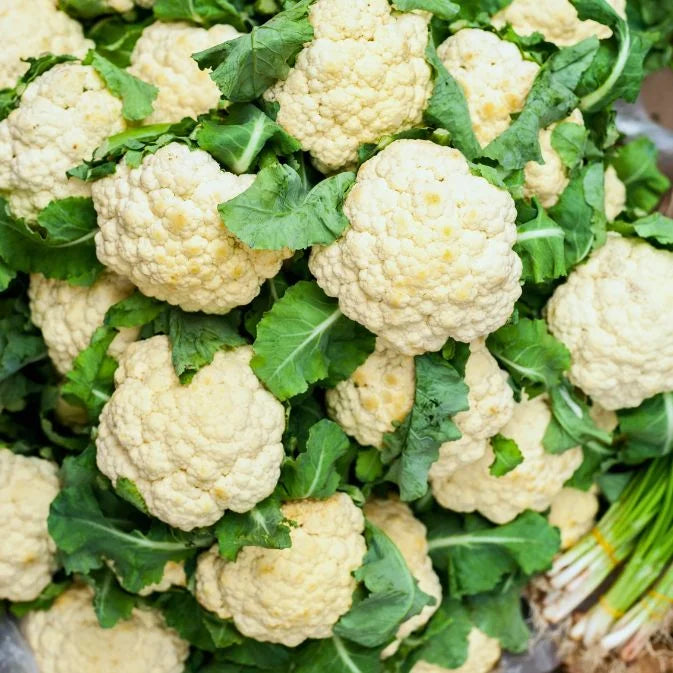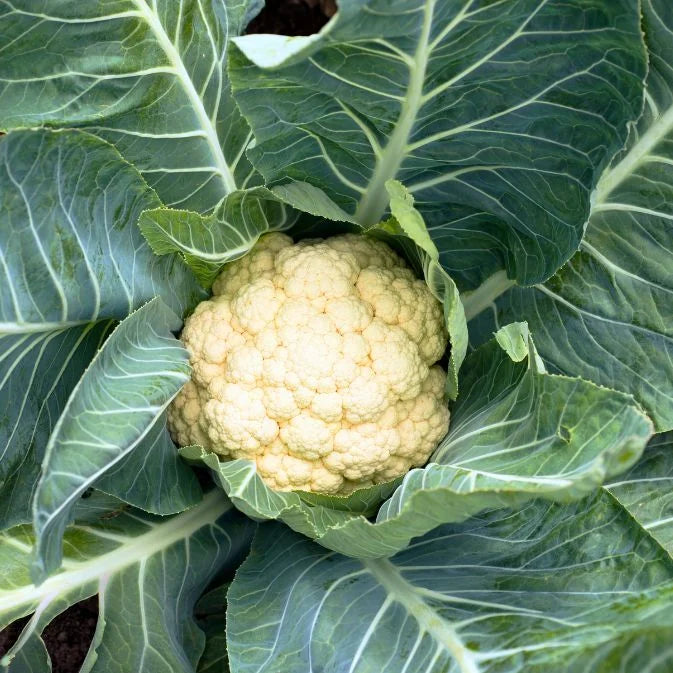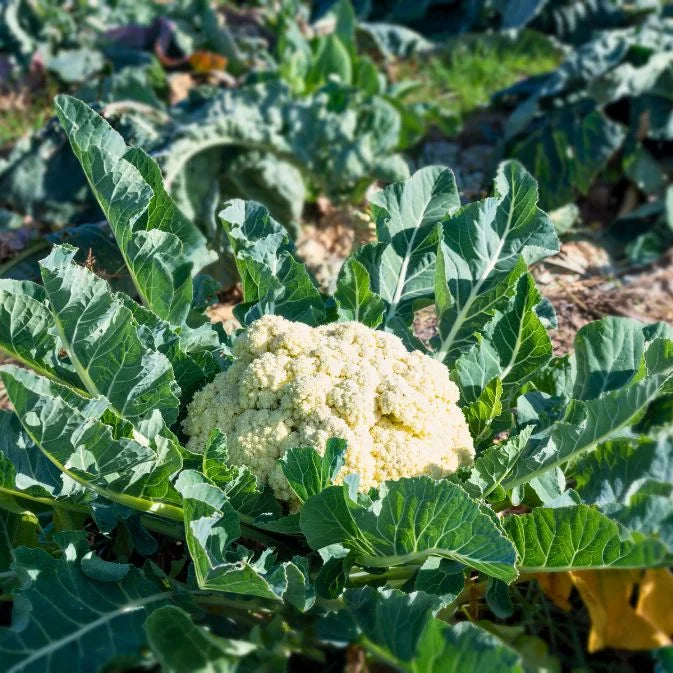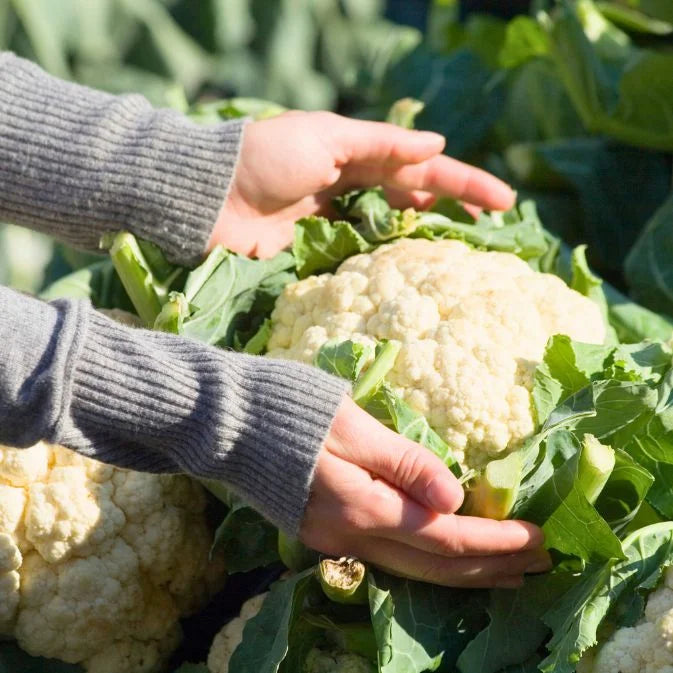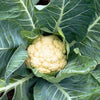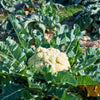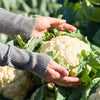When to Plant Cauliflower in Australia
The optimal time to plant cauliflower in Australia depends on the specific region and climate. Cauliflower prefers cooler temperatures and thrives in mild weather.
Here are some general guidelines for different regions in Australia:
- Tropical and Subtropical Regions: In these areas, it is best to plant cauliflower during the cooler months, typically from April to August.
- Temperate Regions: In temperate regions, cauliflower can be planted during the cooler months, from March to September.
- Cool and Alpine Regions: In cooler areas, cauliflower can be planted from August to February, avoiding extreme temperatures.
How Long Does It Take to Grow Cauliflower
The time it takes for cauliflower to grow from seed to harvest can vary depending on several factors, including the variety and growing conditions. On average, cauliflower takes around 60 to 85 days to reach maturity and be ready for harvest. However, some varieties may take longer. It’s important to refer to the seed packet or consult the specific variety’s information for accurate timing.
Cauliflower Growing Stages
Understanding the different stages of cauliflower growth will help you plan and care for your plants effectively.
Here are the key stages:
- Seed Germination: This is the initial stage where cauliflower seeds sprout and develop into seedlings. It usually takes around 7 to 10 days for the seeds to germinate.
- Seedling Growth: The seedlings will continue to grow and develop their first set of true leaves. During this stage, they require adequate sunlight and regular watering to promote healthy growth.
- Transplantation: Once the seedlings have developed a strong root system and several sets of leaves, they can be transplanted into their final growing location.
- Head Formation: After transplanting, cauliflower plants will start to form heads. The heads develop in the centre of the plant and gradually enlarge over time.
- Maturity and Harvest: Cauliflower heads are ready for harvest when they reach the desired size and have a compact, dense texture. The maturity time varies depending on the variety, but it usually takes around 60 to 85 days from transplanting to harvest.
Problems with Growing Cauliflower
Growing cauliflower can present a few challenges. Here are some common problems you may encounter and how to overcome them:
- Pests: Cauliflower can be susceptible to pests such as aphids, cabbage worms, and slugs. Monitor your plants regularly and take action at the first signs of infestation. Consider using natural remedies or organic pest control methods.
- Diseases: Cauliflower is prone to diseases like clubroot, powdery mildew, and black rot. To prevent diseases, ensure proper spacing between plants, practice crop rotation, and provide adequate air circulation. If disease occurs, remove and dispose of affected plants promptly.
- Bolting: Bolting is when the cauliflower plant prematurely produces a flower stalk. This is usually caused by stress from high temperatures or inconsistent watering. To prevent bolting, plant cauliflower at the appropriate time for your region and provide consistent moisture.
- Uneven Heads: Uneven head development can be caused by irregular watering or nutrient deficiencies. Maintain consistent soil moisture and provide balanced fertilisation to promote even head growth.
How to Grow Cauliflower from Seeds
Growing cauliflower from seeds allows you to have complete control over the life of the plant and often results in better yields.
Here’s how to grow cauliflower from seeds:
- Seed Starting: Start cauliflower seeds indoors 6 to 8 weeks before the last expected frost date in your area. Plant the seeds in seedling trays or small pots filled with seed-starting mix.
- Provide Optimal Conditions: Place the seed trays in a warm location with temperatures between 18-24°C (64-75°F). Ensure they receive ample sunlight or use fluorescent grow lights to provide sufficient light for seedling development.
- Transplanting: When the seedlings have developed several sets of true leaves, and the soil has warmed up, they are ready for transplanting. Harden off the seedlings by gradually exposing them to outdoor conditions for a week before transplanting.
- Prepare the Soil: Choose a sunny location with well-drained soil. Amend the soil with compost or well-rotted manure to improve fertility and drainage.
- Planting: Dig a hole slightly larger than the root ball of the seedling. Place the seedling in the hole, ensuring the top of the root ball is level with the soil surface. Space the cauliflower plants according to the recommended spacing for your chosen variety.
- Watering and Maintenance: Water the seedlings thoroughly after transplanting and continue to keep the soil consistently moist throughout the growing season. Mulching around the plants can help retain moisture and suppress weeds.
- Head Development and Harvesting: As the cauliflower heads develop, monitor their progress. Harvest the heads when they reach the desired size and have a firm texture. Cut the heads with a sharp knife, leaving a few outer leaves intact.
How to Grow Cauliflower in Pots
If you have limited garden space, you can grow cauliflower successfully in pots or containers. Here’s how:
- Container Selection: Choose a large container with a depth of at least 30-40 cm to accommodate the cauliflower’s root system. Ensure the container has drainage holes to prevent waterlogging.
- Potting Mix: Use a high-quality potting mix that provides good drainage. Fill the container, leaving about an inch of space below the rim.
- Seed Starting or Transplanting: Start cauliflower seeds indoors following the same seed-starting instructions mentioned earlier or purchase seedlings from a local nursery. Transplant the seedlings into the containers once they have developed a strong root system and several sets of true leaves.
- Placement: Place the containers in a sunny location that receives at least six hours of direct sunlight daily. If needed, use a pot saucer or coaster to catch excess water drainage.
- Watering and Feeding: Keep the soil evenly moist by watering regularly. Check the soil moisture frequently and adjust the watering frequency as necessary. Apply a balanced vegetable fertiliser according to the manufacturer’s instructions.
- Maintenance: Monitor the plants for pests, diseases, and nutrient deficiencies. Take appropriate action if any issues arise. Provide support such as staking or trellising for larger cauliflower varieties to prevent plants from toppling over.
- Harvesting: Harvest the cauliflower heads when they have reached the desired size and have a compact, dense texture. Cut the heads with a sharp knife, leaving a few outer leaves intact.
How To Grow Cauliflower From Stem
Now that we’ve discussed the problems that can arise when growing cauliflower, let’s move on to how you can successfully grow it from a stem.
The first step in this process is to choose a healthy cauliflower plant with thick stems.
Next, prepare the soil by ensuring it is well-draining and nutrient-rich. You can use organic matter such as compost or manure to enrich the soil. It’s also important to make sure the soil has enough nutrients such as nitrogen, phosphorus, and potassium.
Once you have prepared the soil, cut off a mature cauliflower head from the plant leaving about 2 inches of stem attached.
Plant the stem into the soil, making sure it is deep enough for stability but not too deep that it covers any remaining leaves.
Water regularly but avoid getting water on the leaves as this can cause rotting. Additionally, ensure that there are no pests present as they can damage your plants and reduce yield.
Cauliflower Pest Control
Another key factor in growing cauliflower is avoiding pests. Aphids and cabbage worms are common culprits that can damage or destroy your plants. To prevent infestations, try companion planting with mint, rosemary, basil and marigold that repel these pests naturally.
Cabbage worms and aphids which can be controlled with insecticidal soap or neem oil.
Crop rotation is also important in preventing disease buildup in the soil. Rotate your crops every year by planting cauliflower in a different location than it was planted previously.
Conclusion
Growing cauliflower in Australia is an exciting endeavour that can provide you with an abundant harvest of this nutritious vegetable. By understanding the appropriate planting times, growth stages, common problems, and various cultivation methods, you can successfully grow cauliflower in your garden or pots. Whether you start from seeds, stem cuttings, or transplants, with proper care and attention, you’ll be rewarded with fresh, flavourful cauliflower heads that can elevate your culinary creations. Happy gardening!


